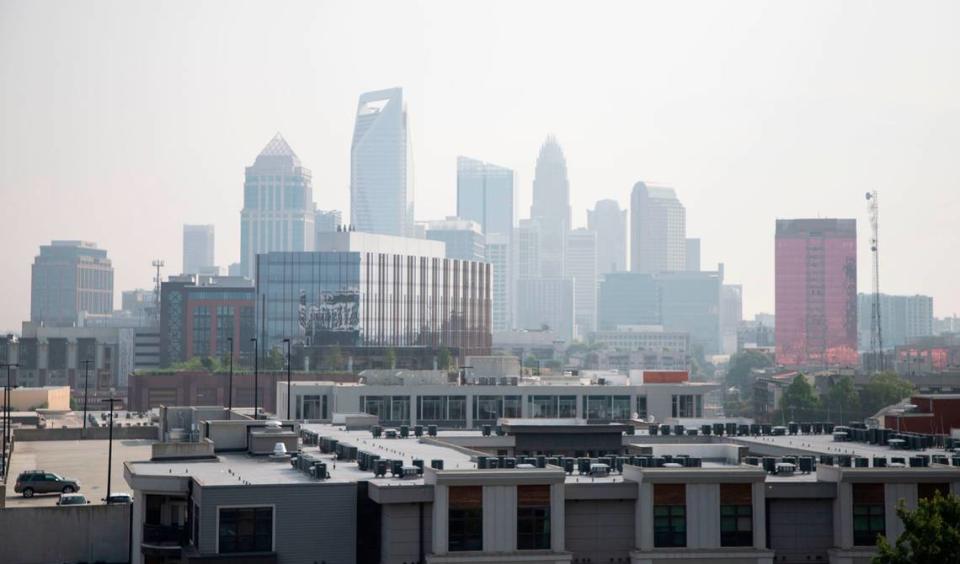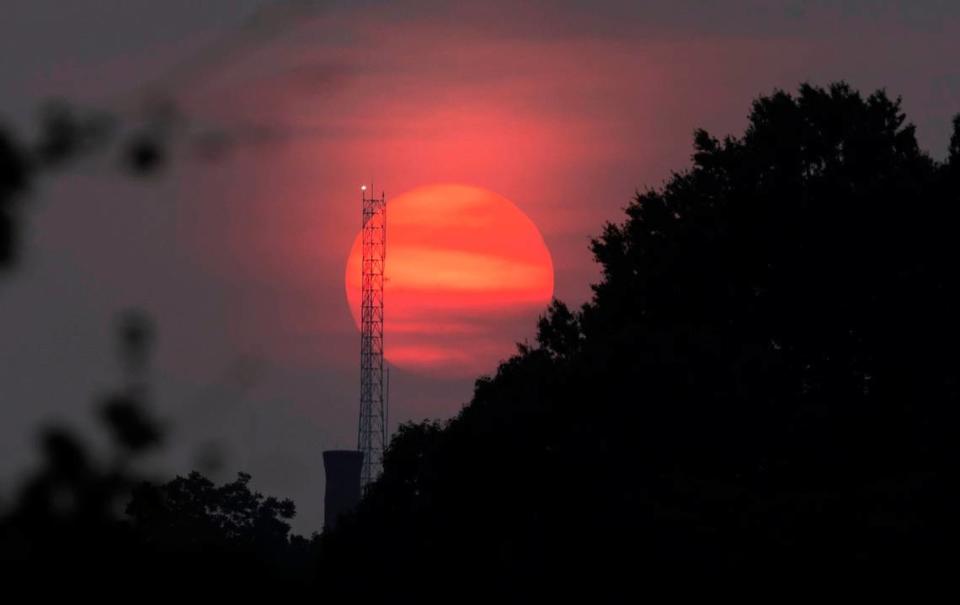All of North Carolina under Code Orange air quality alert from Canada wildfire smoke
On Wednesday afternoon, North Carolina officials issued a statewide Code Orange air quality alert for all of Thursday as smoke funnels in from Canadian wildfires for the rest of the week.
Harmful particles will create potentially unhealthy conditions for everyone — especially those with asthma, the Department of Environmental Quality said this week.
The Code Orange alert means air quality could be better for some and worse for others.
More than 35 counties in the Piedmont and central North Carolina — including Charlotte and Raleigh — were under Code Red alerts Wednesday, while the westernmost and eastern part of the state saw Code Yellow alerts.

More than 400 Canadian wildfires continue to scorch land near Quebec, sending clouds of smoke downwind to the United States, including the Carolinas. The smoke, paired with rising temperatures, allowed ozone levels to rise Tuesday and will create unhealthy conditions for people outside for the rest of the week.
Air quality and smoke models “have been struggling with the complexity and behavior of this very challenging air quality episode,” the DEQ said.
Sunny skies Friday could allow ozone levels to rise and again worsen air quality, forecasts show.

When ozone is high in the atmosphere, it shields people from the sun’s harmful rays. But when found in the lower atmosphere, ozone — the main ingredient in smog — can negatively affect people and the environment, according to the Environmental Protection Agency.
Stay inside
Those in Code Red areas should limit time outdoors as much as possible, and anyone sensitive to air pollution — including people with asthma — should avoid outdoor activities altogether, according to the DEQ.
While it is still OK for people in Code Orange areas to go outside, they should limit their time and take breaks, the DEQ recommends.
The American Lung Association recommends people especially avoid going outside near cities, where ozone and emission levels tend to be higher. It also suggests people consider reducing their own emissions by using less energy inside their homes.
If people must leave their homes, the EPA suggests reducing emissions by combining errands and carpooling or taking public transportation. It also recommends avoiding using gasoline or fueling at night — when temperatures cool — if absolutely necessary.
When will the air clear?
According to a North Carolina State Climate Office article on forecasting, rain can limit ozone production.
Expected rain in the Charlotte area Wednesday afternoon could provide a short reprieve, but smoke is expected to again stall above the Carolinas, according to the DEQ.
As the wildfires continue to burn in Canada, plumes of smoke have settled over New York, sending cities into Code Purple alerts and driving some to again don masks.
The same clouds are expected to move south into the Carolinas later this week, according to the DEQ. A Code Purple alert has not been forecast for the Charlotte region, but officials still recommend people avoid outdoor activities until the smoke and smog lifts.

